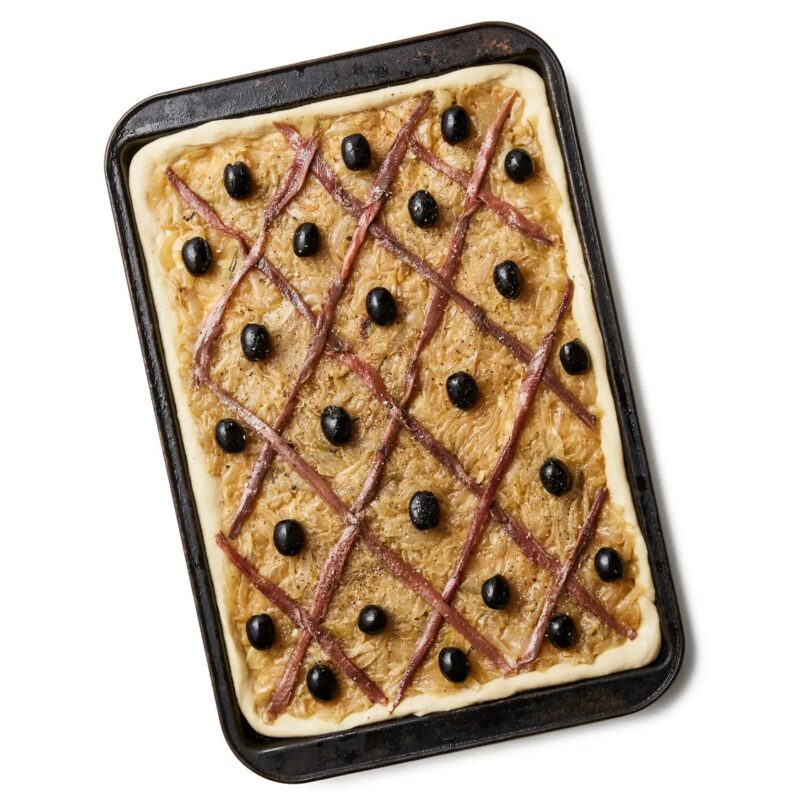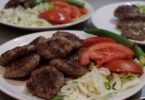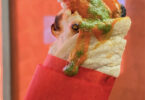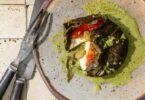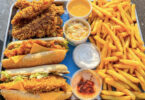Felicity Cloake
Visitors to the Côte d’Azur don’t need to set foot in a museum to clock that the region was for a long time under Italian control. In fact, it became part of France only as recently as 1860, which explains why the traditional dialect, architecture and, most obviously, cooking all have a distinctly Ligurian feel (and why there’s a statue of Giuseppe Garibaldi in Nice, his birthplace).
It’s unsurprising, then, that pissaladière, “a typically Niçoise hors d’oeuvre”, according to the city’s disgraced former mayor Jacques Médecin, bears more than a passing resemblance to pizza. (Indeed, food writer Caroline Craig, whose family hails from farther west, fancifully dates the Provençal fondness for the stuff to the Roman occupation, while Jonathan Meades believes that Marseille does better pizza than Naples). But, as Noble Rot Soho’s chef Alex Jackson observes, whatever you liken it to, pissaladière is “much more than the sum of its parts. To call it ‘onion tart [or pizza] with anchovies and olives’ somehow underplays it”. Salty-sweet and deliciously oily, it’s ideal cut into small squares and paired with a well-chilled aperitif or, served in more generous wedges, with a green salad. Sunshine optional.
The base
Craig explains in Provence: The Cookbook that, “like pizza, truly authentic pissaladière is made with bread dough”, something confirmed by Médecin (who, when he wasn’t peddling far-right views, managed to pen a more palatable cookbook, published in English as Cuisine Niçoise). In agreement are chef Paul Bocuse and the Maîtres Cuisiniers de France’s 1984 collection, Cuisine du Terroir. A recipe from Alex Benvenuto’s Carnets de Cuisine du Comté de Nice, written in collaboration with the committee responsible for ensuring the preservation of local gastronomy – which in 2019 was declared part of France’s cultural heritage, because the French take such serious things seriously – also uses bread dough. But not everyone agrees with these authorities: Jackson, whose previous restaurant Sardine lives on through his cookbook of the same name, writes that: “I have heard many arguments for the use of puff pastry for a pissaladière, and I have even tasted a few pizza-like numbers made with semolina flour, but for me a shortcrust does the job perfectly. I make mine very buttery.” Marseille-based Meades, meanwhile, who uses puff pastry, describes pissaladière in his book The Plagiarist in the Kitchen as “often closer to tarte fine than to a ‘real’ pizza”, adding: “Better always trumps real. This is better.”
Vexed questions of “authenticity” aside, just about any base would be improved by the oniony topping, but, much as I love Jackson’s very buttery pastry (in fact, when I go back to the samples, I find one tester, who shall remain anonymous, has removed most of the crust), the meeting of oily onion and fluffy dough is so especially pleasing that I’m going to stick with the traditional choice of bread. Craig’s richer recipe is particularly good (interestingly, the late Alastair Little deploys a focaccia dough in his 1999 book Soho Cooking on the basis that, “originating in Liguria just across the border from Nice, [it] seemed apposite”).
The onions
Here’s where British readers might need to compromise with authenticity. Jackson notes that “the best onions for a pissaladière are expensive, small white onions from Italy and France – not a spring onion, but sweet and delicate nonetheless. When cooked very slowly in olive oil, they are remarkably mild, even sweeter and strangely delicious for something so simple.” Like Meades, Bocuse simply specifies sweet onions in his Regional French Cooking, cook Lulu Peyraud favoured “large, white summer onions, very sweet with a high water content”, according to Richard Olney in their co-authored collection, Lulu’s Provençal Table, and Benvenuto “oignons paille”, which Craig’s mother Françoise informs me are big, juicy and flatter than the usual yellow sort, but which prove elusive in London.
I don’t have any luck with Jackson’s expensive, small white onions, either, but I do try Peyraud’s larger white ones, which I find a bit bland, and, on a whim, red onions, which prove rather too jammy, bringing back memories of the red-onion marmalade craze of the 1990s. A certain level of sweetness is desirable as a contrast with the salty layer above, but it shouldn’t be the predominant flavour. Though heretical, if the stern instruction of many that they “should remain absolutely uncoloured”, as Peyraud puts it, is anything to go by, the very lightly browned onions on top of Craig’s pissaladière prove the most popular with my testers; ignore the warnings – they won’t burn in the oven, as long as you keep an eye on them. (If the thought fills you with purist disgust, take the onions off the heat once the water has evaporated.)
Benvenuto’s recipe cooks the onions for an hour, Jackson’s for 90 minutes, Craig’s for a minimum of hour and 45 minutes and Meades two hours, so you’ll be relieved to know that, as long as you lubricate them liberally with oil (Benvenuto recommends 100ml for 2kg onions; Craig uses the same amount of lovely butter*) and cover the pan so they steam in their own juices, they don’t require much of your attention at this stage. As onions, pans and hobs all differ, however, you’ll need to judge for yourself when they’re soft enough to form “a semi puree”, as Peyraud (or Olney) puts it, and be more present in the next step, when the water is boiled off and the sugars caramelised.
Bocuse, Benvenuto and the French masterchefs add a bouquet garni to the pan (Jackson and Craig stick with thyme alone), while the latter two add garlic as well. Like the butter, these seasonings are enhancements rather than essentials, but who doesn’t benefit from a little enhancement?
I’m afraid this recipe does involve a lot of peeling and slicing (a mandoline – with a safety guard! – is advisable), and there’s no getting around that: Médecin cautions readers to be wary of “the mass-produced versions of pissaladière that are sold on street stalls or ‘drugstores’ in the south of France – the layer of onions is usually paper -thin. A proper pissaladière of the kind still found in Niçoise food markets will boast a layer of onion at least half as thick as the base, if it is made of bread dough, and equally thick, if it is made of shortcrust pastry.” So don’t be dismayed by the amount of onion in the recipe below – I can’t promise that slicing onions will be a mindful activity, but I do believe the results are well worth the tears.
- Up here in the frozen north, it’s easy to assume that Mediterranean regions cook purely with olive oil, but, as Craig explains, somewhat crossly: “there is no imaginary wall below Lyon that prevents cows from entering Provence, and butter continues to be extensively used in dishes well beyond the usual cakes and bakes”.
The topping
There’s almost no dissent here: just olives, preferably the salted black sort sold as “à la Grecque” for maximum flavour punch, and anchovies. Jackson, Peyraud and Benvenuto all specify the salted variety, which have become strangely hard to procure, in London at least. Plumper, with a firmer, more fishy texture, if you can’t find them, I can assure you that their oil-packed cousins will shine here, too (I suspect their oily bath actually helps keep them softer in the heat of the oven).
As well as using the anchovies on top, Meades stirs a generous helping into the onions as they cook, which gives them a pleasant, savoury edge, but spoils the sweet and salty contrast between the different elements of the topping. One for real anchovy fiends only.
More controversially, Bocuse adds a layer of tomato sauce, which is the kind of thing you can only get away with if you have more Michelin stars than you can shake a spoon at – because tomatoes belong in Ligurian pissadella, not Niçoise pissaladière. (That said, don’t tell the French, but it is quite nice.)
Traditionally, instead of anchovies, pissaladière was smeared with a cloth dipped in pissala, or fish puree, before going into the oven, but pissala is pretty thin on the ground these days. Médecin helpfully explains that, authentically, it is made with “palaia [small fry] of sardines and anchovies”, but, “because of the difficulty in obtaining palaia, there is an increasing tendency to make pissala with fully-grown anchovies … though no self-respecting connoisseur would touch [it]”. His recipe takes a month, and requires 2kg of baby fish.
Note that, of course, this dish is easily made vegan by simply leaving out the butter and fish; I’d substitute strips of roast pepper on top for a different, but equally good result. Also, it’s very hard to give exact timings for either the dough or the onions, because both depend on the conditions, so leave this for a day when you have enough time that you don’t have to rush, either.
Perfect pissaladière
Prep 45 min
Cook 2½ hr
Serves 4-6
For the base (or use 300g shortcrust or puff pastry)
250g strong white bread flour
½ tsp salt
3g fast-action yeast
1 tbsp olive oil, plus extra for greasing
For the topping
1kg onions
1 garlic clove
3 tbsp olive oil
A knob of butter (optional)
1 sprig each fresh rosemary and thyme, plus 1 bay leaf (all optional)
Salt
About 10 anchovy fillets
About 14 dry black olives
Extra-virgin olive oil, to serve
Peel, trim, halve and finely slice the onions using a mandoline, sharp knife or the slicing attachment on a food processor. Peel the garlic and roughly crush it with the flat of a large knife.
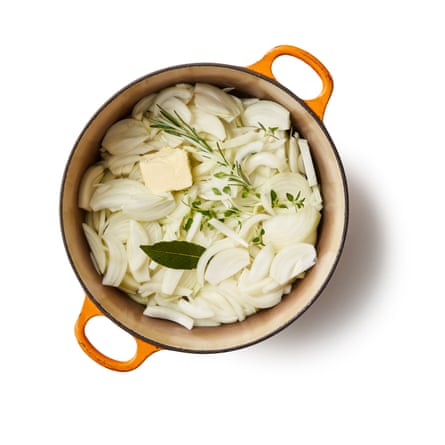
Put a large, heavy-bottomed pan or pot for which you have a tight-fitting lid on a low heat, add the oil and butter, immediately followed by the onions, herbs (if using), garlic and a pinch of salt.
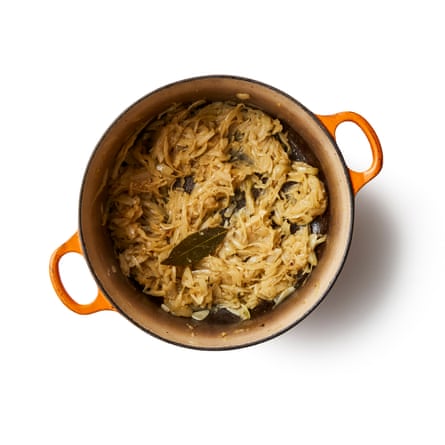
Stir to coat the onions with the oil, then clap on the lid and leave to cook, stirring occasionally, for about an hour, or until they’re very soft.
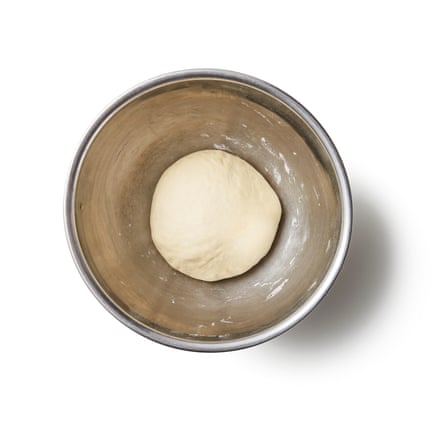
Meanwhile, if you’re making a bread dough base, stir the flour, salt and yeast in a large bowl, then add the oil and just enough water (probably a little under 150ml) to bring it together into a coherent, but not sticky or floury dough.
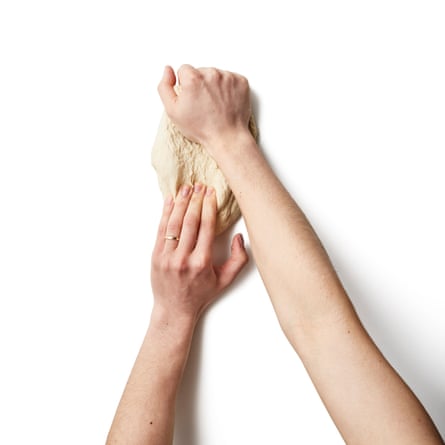
Tip out on to a lightly oiled surface, oil your hands, and knead the dough until it’s springy, smooth and elastic. Lightly oil the bowl, put the dough back in, cover and leave in a draught-free place until it’s roughly doubled in size – this should take about 90 minutes, but judge by eye rather than time.
Take the lid off the onions, turn up the heat very slightly and cook, stirring frequently to ensure they don’t catch, until the liquid has evaporated and the onions have turned a light golden brown. Take off the heat and leave to cool.
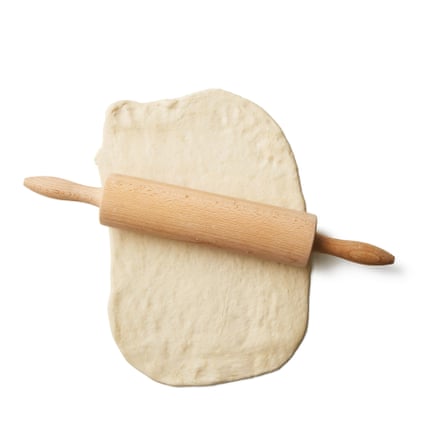
Lightly oil a baking tray and heat the oven to 200C (180C fan)/390F/gas 6. Knock the air out of the dough, then, on a greased surface, roll it out into a roughly ½cm-thick rectangle.

Spread the onions in a thick layer on top, leaving a border all around the edge. Cut the anchovies in half lengthways, to make thin strips, use these to create a diamond pattern all over the top of the onions, then pop an olive in the centre of each diamond.
Bake the pissaladière for about 20-25 minutes, until the crust is golden. Drizzle with a little extra-virgin olive oil and leave to cool slightly, or entirely, before slicing and serving.
Courtesy: theguardian

